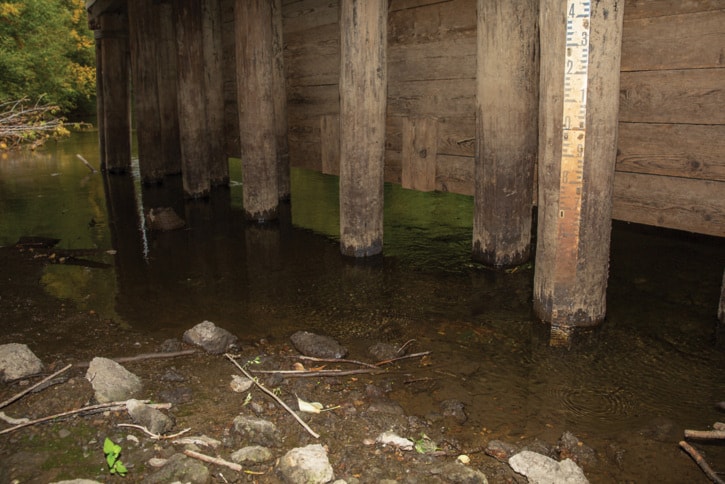A request to Salmon River water users to halt irrigation may already be having a positive effect for spawning salmon.
Gene Puetz has just started to see spawning salmon swim through the Salmon River fish counting gate he oversees for Fisheries and Oceans Canada.
This bit of good news is, in part, the result of human intervention necessitated by recent high temperatures and low water levels at the mouth of the river on Shuswap Lake.
“The fish should be pretty much ready to spawn about now,” Puetz said Tuesday, Sept. 1. “Usually, the 10th to the 15th of September is our peak spawn time. Ideally, if we can get them in here in the next week to 10 days, it would be nice.”
Part of that intervention was a call-out by the B.C. provincial government to all licensees on the Salmon River water system, including Fowler Creek, asking they participate in a voluntary irrigation shutdown between Aug. 21 and 22, and again between Aug. 29 and Sept. 1.
“We have seen flows bump up with the previous voluntary shutdown on Aug. 21 to 22,” Ministry of Forests, Lands and Natural Resource Operations spokesperson Greig Bethel commented Tuesday via email. “The thinking is that the cessation of irrigation, coupled with the cooler wet weather, may provide sufficient conditions for salmon migration.”
Bethel thanked those Salmon River water users who have stopped irrigating, noting compliance levels vary but have been increasing.
“There’s not too much irrigating going on any more as far as I can tell.… which should help a little bit,” confirmed Puetz.
Meanwhile, Puetz says Fisheries and Oceans staff have recently been working in the river delta, attempting to combine several small channels into a new, larger one spawning salmon will use to access the river.
“I haven’t been down to the mouth myself, but I’ve talked to some of the Fisheries people and they said there’s about 300 metres of area there where there’s really not much space for them, in kind of the delta, the mud flat, where it goes into the lake – it’s pretty hard for fish to get through so they’re hoping to channel it.”
Puetz says 2003 was the last time he can remember when human intervention was needed to assist spawning salmon into the Salmon River. He says the low snowpack from winter, and the hot spring and summer, were key factors behind the low water levels hindering this year’s journey. He notes the recent cool, wet weather has also been beneficial.
“Colder weather helps because the water cools off and it usually brings your flow up just a little, even without rain,” said Puetz. “But we had a little bit of rain yesterday. A little more rain wouldn’t hurt, it would all be good.”
Though the voluntary irrigation stoppage was supposed to end on Sept. 1, Puetz suggested extending it a little longer also wouldn’t hurt.
